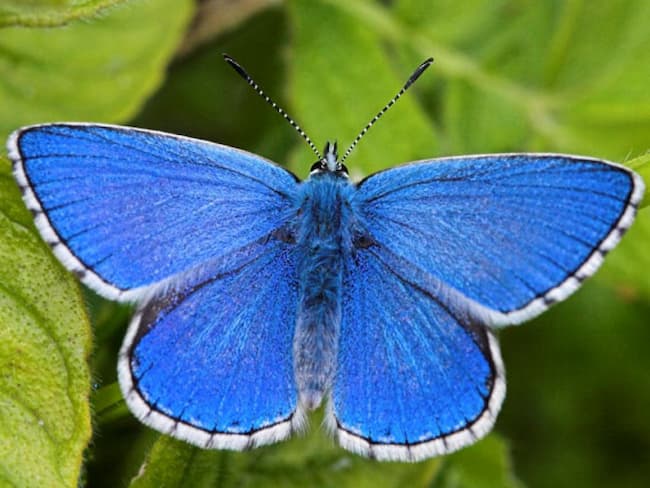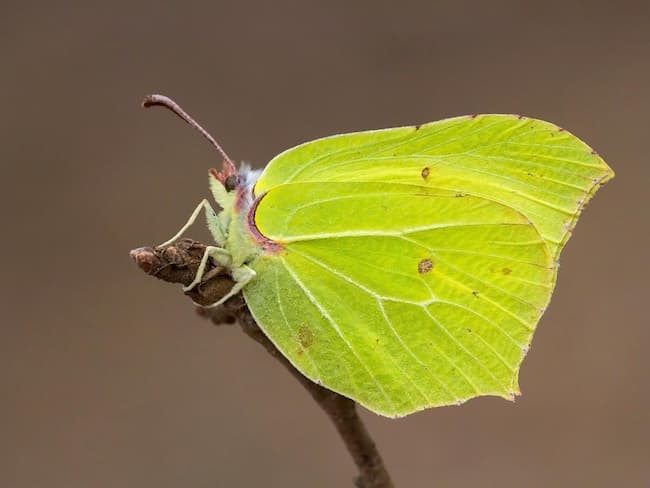Butterflies are nature’s ephemeral treasures, adorning our surroundings with their delicate wings and graceful flight. Among these enchanting creatures, the Black Hairstreak (Satyrium pruni) stands out as a true gem of the butterfly world. In this article, we will delve into the captivating world of the Black Hairstreak butterfly, exploring its distribution, physical characteristics, life cycle, ecological importance, conservation status, and ways to support its presence in our natural habitats.
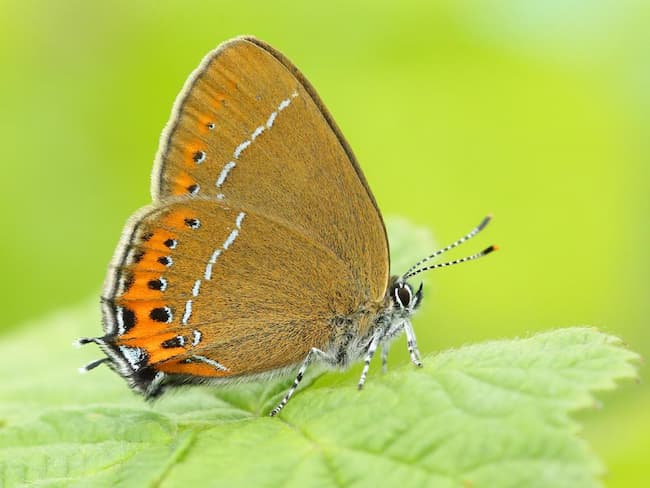
Overview of the Black Hairstreak Butterfly
2.1 Distribution and Habitat
The Black Hairstreak butterfly is predominantly found in parts of Europe, including the United Kingdom, France, Belgium, and the Netherlands. It favors a specific habitat known as blackthorn scrub, where
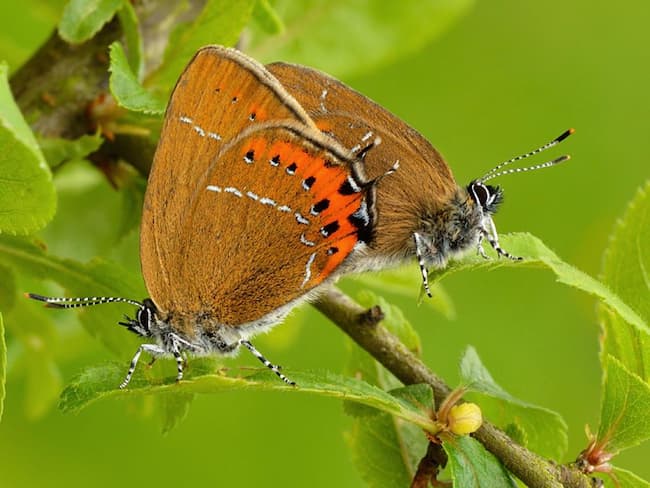
2.2 Physical Characteristics
The Black Hairstreak boasts a striking appearance with a subtle elegance. Its upper wings are dark brown or black, while the undersides display a contrasting combination of light gray and white, adorned with a thin orange line. Males and females exhibit slight differences, with females typically having broader wings and a slightly different pattern.
Life Cycle and Behavior
3.1 Egg Stage
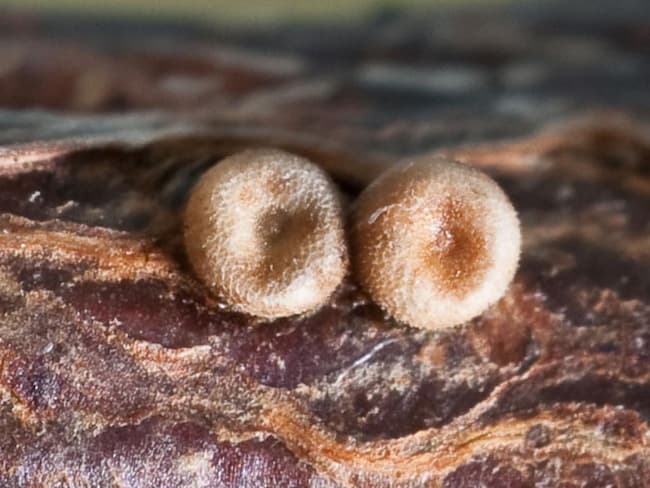
The life cycle of the Black Hairstreak begins with the female butterfly laying eggs on blackthorn plants. These small, pale green eggs are carefully attached to the twigs and branches, providing a secure environment for the development of the larvae.
3.2 Larval Stage
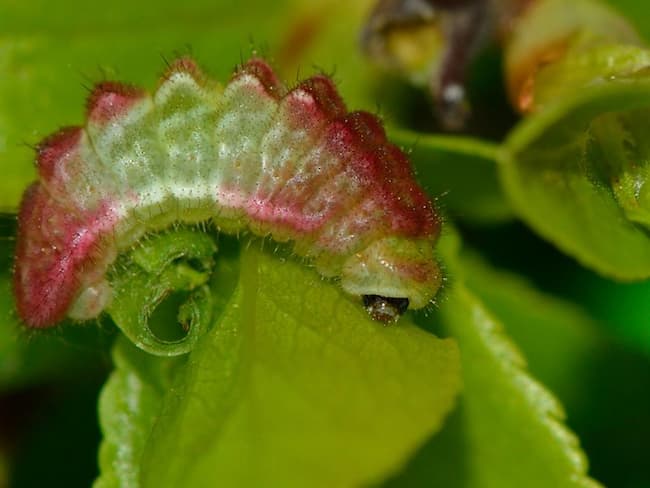
Upon hatching, the larvae emerge and feed on the buds and leaves of blackthorn plants. They undergo several molting stages, growing in size and gradually adopting a green coloration. The larvae are typically attended by ants, forming a mutualistic relationship where the ants protect them from predators while benefiting from the sugary secretions of the larvae.
3.3 Pupal Stage
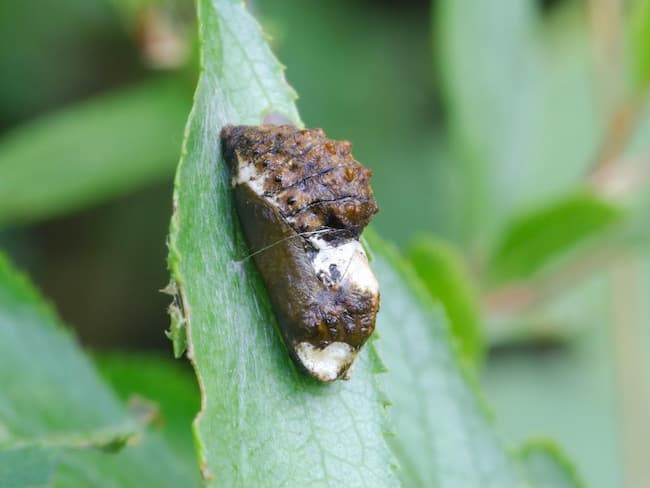
When the larvae reach their full size, they form a chrysalis or pupa, suspending themselves from the twigs or stems of the host plant. The pupa is a protective casing where the transformation from caterpillar to butterfly takes place. It blends in with the surroundings, providing camouflage and safeguarding the developing butterfly.
3.4 Adult Stage
After spending a period as a pupa, the adult Black Hairstreak emerges from the chrysalis. With their delicate wings and intricate patterns, they take flight in search of nectar-rich flowers and mates. The adult butterflies have a relatively short lifespan, typically lasting only a few weeks.
Importance and Ecological Role
The Black Hairstreak plays a crucial role in the ecosystem as a pollinator. As it moves from flower to flower, collecting nectar, it inadvertently transfers pollen, enabling the reproduction of various plant species. This symbiotic relationship between the butterfly and plants contributes to the overall biodiversity and ecological balance of the habitats they inhabit.
Threats and Conservation Status
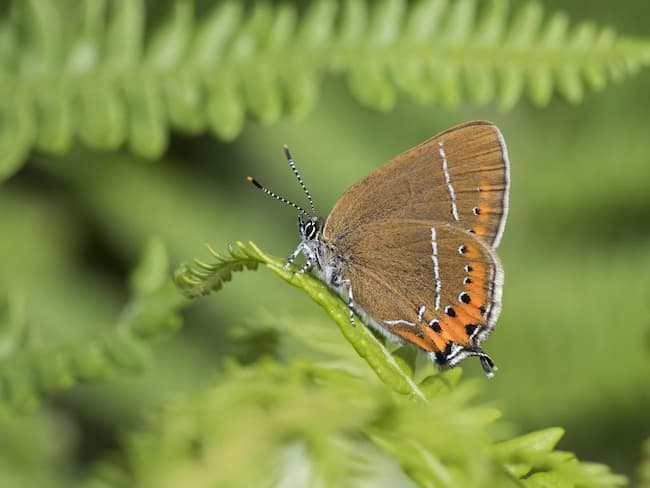
5.1 Habitat Loss and Fragmentation
The Black Hairstreak faces threats primarily due to habitat loss and fragmentation. The clearance of blackthorn scrub for agriculture, urban development, and changes in land management practices have significantly reduced the availability of suitable habitats for this butterfly species.
5.2 Conservation Efforts
Conservation efforts are vital for the preservation of the Black Hairstreak and its unique habitat. Initiatives focus on habitat restoration, raising awareness about the importance of blackthorn scrub, and encouraging responsible land management practices to support the survival of this delicate species.
Tips for Spotting and Supporting Black Hairstreak Butterflies
6.1 Preferred Habitats
To increase your chances of spotting Black Hairstreak butterflies, visit areas with blackthorn scrub habitats. These include woodlands, hedgerows, and scrubby areas where blackthorn plants grow. Look for their distinctive flight pattern and keep an eye on their favored perching spots.
6.2 Nectar Plants for Adult Butterflies
To support Black Hairstreak butterflies and other pollinators, consider planting nectar-rich flowers in your garden. Flowers like buddleia, thistles, marjoram, and knapweed are attractive to butterflies and provide a source of nourishment.
Conclusion
The Black Hairstreak butterfly, with its exquisite beauty and intricate life cycle, holds a special place in our natural world. As we marvel at its delicate wings and observe its presence among blackthorn scrub habitats, let us recognize the importance of conserving these ecosystems and supporting the survival of this enchanting species. Together, we can ensure that future generations have the opportunity to witness the captivating flight of the Black Hairstreak.
FAQs
FAQ 1: Where can I find the Black Hairstreak butterfly?
The Black Hairstreak butterfly is primarily found in parts of Europe, including the United Kingdom, France, Belgium, and the Netherlands. Look for them in blackthorn scrub habitats, such as woodlands, hedgerows, and scrubby areas.
FAQ 2: What do Black Hairstreak butterflies feed on?
As adult butterflies, Black Hairstreaks feed on the nectar of various flowering plants. Some preferred nectar sources include buddleia, thistles, marjoram, and knapweed.
FAQ 3: Why are Black Hairstreak butterflies important?
Black Hairstreak butterflies play a vital role in pollination, contributing to the reproduction of plant species and the overall health of their habitats.
FAQ 4: What are the threats to Black Hairstreak butterflies?
Habitat loss and fragmentation due to agricultural practices, urban development, and changes in land management pose significant threats to the Black Hairstreak butterfly.
FAQ 5: How can I contribute to the conservation of Black Hairstreak butterflies?
You can support conservation efforts by creating butterfly-friendly habitats in your garden, planting nectar-rich flowers, and spreading awareness about the importance of preserving blackthorn scrub habitats.
